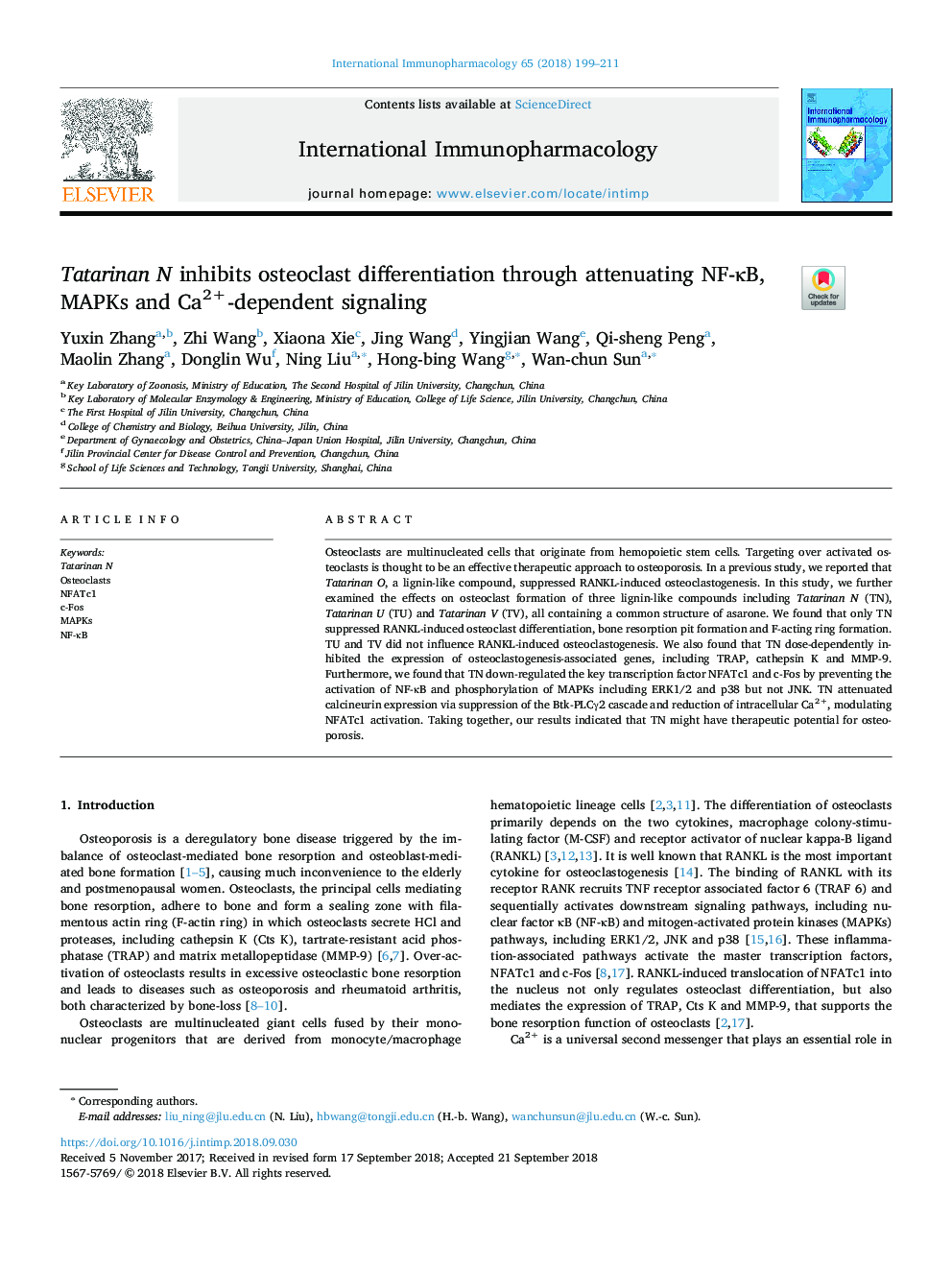| Article ID | Journal | Published Year | Pages | File Type |
|---|---|---|---|---|
| 11019386 | International Immunopharmacology | 2018 | 13 Pages |
Abstract
Osteoclasts are multinucleated cells that originate from hemopoietic stem cells. Targeting over activated osteoclasts is thought to be an effective therapeutic approach to osteoporosis. In a previous study, we reported that Tatarinan O, a lignin-like compound, suppressed RANKL-induced osteoclastogenesis. In this study, we further examined the effects on osteoclast formation of three lignin-like compounds including Tatarinan N (TN), Tatarinan U (TU) and Tatarinan V (TV), all containing a common structure of asarone. We found that only TN suppressed RANKL-induced osteoclast differentiation, bone resorption pit formation and F-acting ring formation. TU and TV did not influence RANKL-induced osteoclastogenesis. We also found that TN dose-dependently inhibited the expression of osteoclastogenesis-associated genes, including TRAP, cathepsin K and MMP-9. Furthermore, we found that TN down-regulated the key transcription factor NFATc1 and c-Fos by preventing the activation of NF-κB and phosphorylation of MAPKs including ERK1/2 and p38 but not JNK. TN attenuated calcineurin expression via suppression of the Btk-PLCγ2 cascade and reduction of intracellular Ca2+, modulating NFATc1 activation. Taking together, our results indicated that TN might have therapeutic potential for osteoporosis.
Keywords
Related Topics
Life Sciences
Immunology and Microbiology
Immunology
Authors
Yuxin Zhang, Zhi Wang, Xiaona Xie, Jing Wang, Yingjian Wang, Qi-sheng Peng, Maolin Zhang, Donglin Wu, Ning Liu, Hong-bing Wang, Wan-chun Sun,
